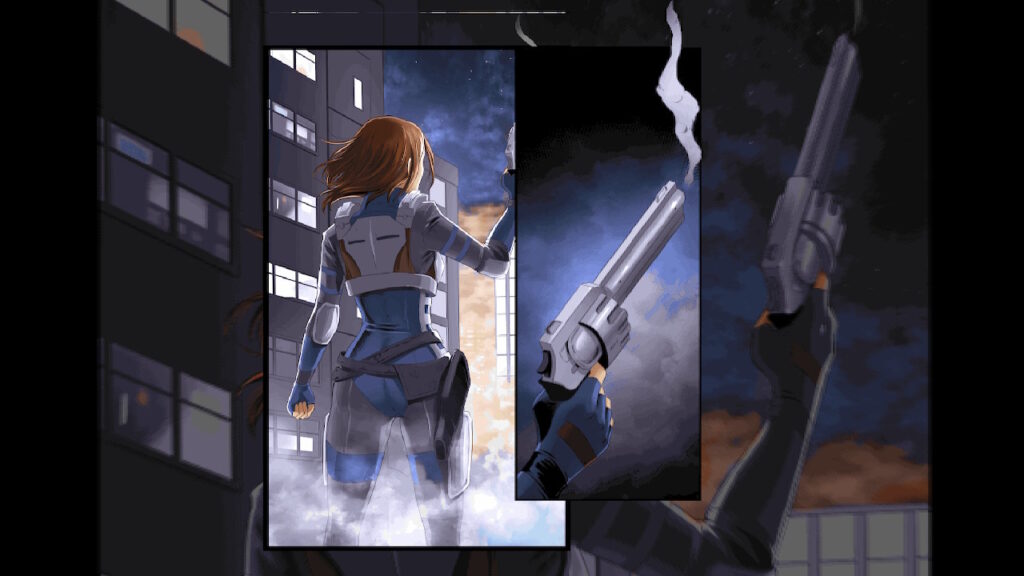
In 2016, there was Bombshell; an overhead action game with some lite-Diablo elements. Most gamers have forgotten about it by now, and has since fallen into obscurity. Since Ion Fury became such a successful Build Engine throw-back, there are many who are unaware that both titles are connected by the protagonist; Shelly “Bombshell” Harrison.
Why use a modified old game engine when current technology can be more efficient and artists can emulate the aesthetics of classic Build Engine games? The authenticity brings with it nuanced quirks that can’t be replicated and the limitations force the designers to be more creative.
Back in September 2019, our team reviewed Ion Fury on PC (we highly recommend it!) While this is the way the game was intended to be played, that should no stop anyone curious to see how it translates onto the Nintendo Switch hardware.
Ion Fury
Developer: Voidpoint / General Arcade
Publisher: 3D Realms
Platforms: Windows PC, Linux, PlayStation 4, Xbox One, Nintendo Switch (reviewed)
Release Date: May 14, 2020
Players: 1
Price: $24.99
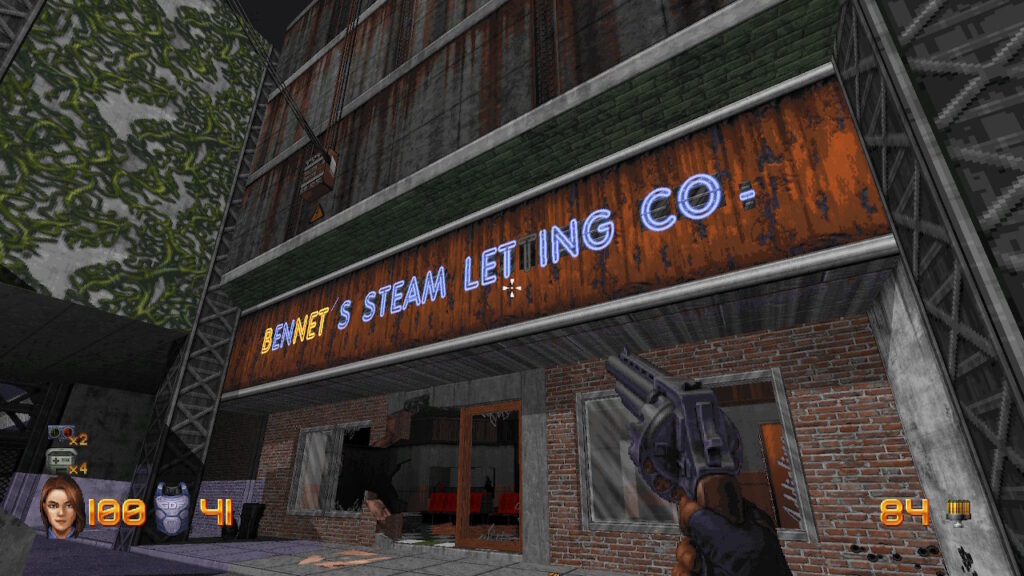
The Build Engine is a unique limitation for a modern developer to impose on themselves. It is not even technically true 3D graphics, since the polygons are drawn up from 2D maps. Ion Fury uses many overlapping sectors to further create the illusion of 3D graphics.
Geometry like a 720 degree loops or something as simple as a diagonal pillar was something not feasible back in the 90s when games like this were at their peak. Today’s programming is much more sophisticated, and 3D Realms fully commits to making an authentic 90s first-person shooter with some new flourishes.
The graphics are about what can be expected from a Build Engine game; chunky pixelated textures and intricate sprites that fill out the scenery. Even the enemies are 2D walking and talking standees that have limited range of animation. One thing that could have been improved is the lack of frames on enemies; artists could have made enemies have more fluidity.
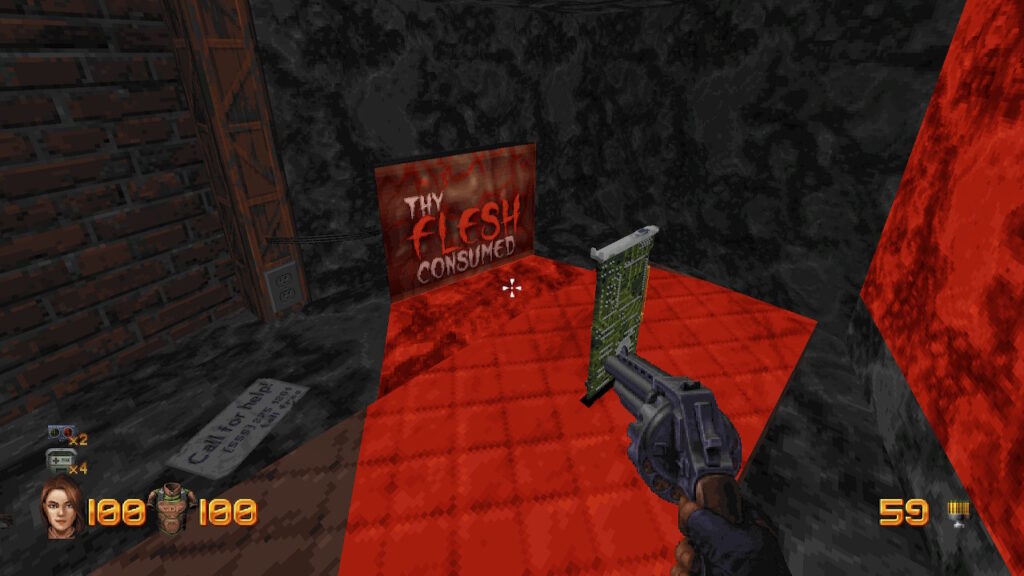
One effect that is very subtle but appreciated is how some 2D elements and voxel-based objects can be affected by the colored lighting in any given scene. This can be seen in Shelly’s hands and weapons as she blows apart cyborgs and cultists and the effect is marvelous considering the colors are only 8-bit.
There is not much to criticize on the visuals and art direction since this is a case of the designers going for a very specific look and utterly nailing it. If there had to be any nit-picks, it would be the comic book art panels used to tell the story at moments that do not mesh well with the 90s PC game aesthetic.
The Switch version is obviously not going to support 4K image quality. It also sadly does not reach 60 frames per second like every other version. The frame rate is mostly in the 30 hertz range and doing the “Konami code” does unlock it to potentially hit 60. It may not mean much now, but this is something that might help it later in the future for Nintendo’s next console.
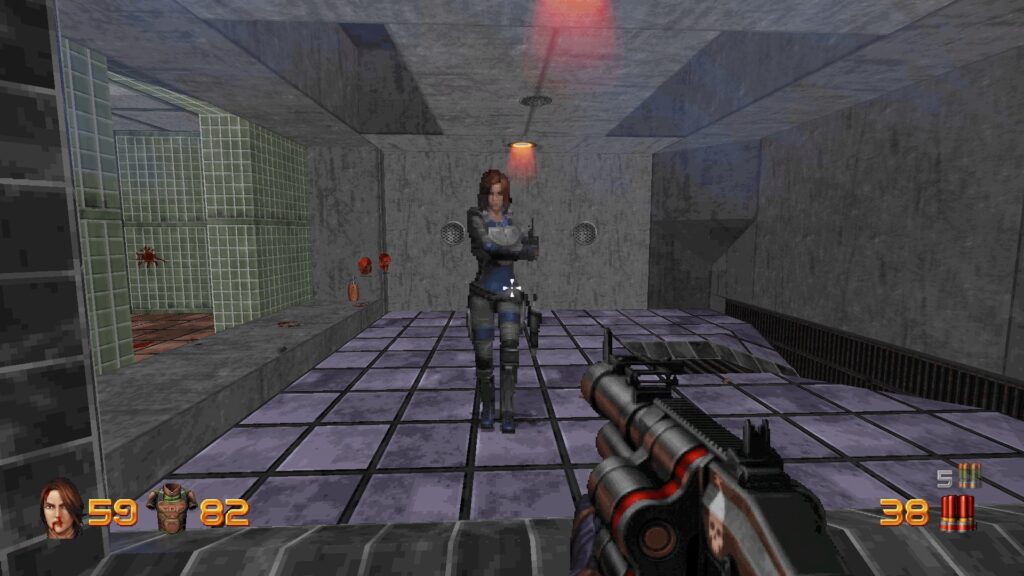
If Ion Fury was made with a traditional 3D game engine like Unity or Unreal 4, it likely would have maintained a 60 frames per second. There have been games that managed it like Travis Strikes Again: No More Heroes or Yooka Laylee and the Impossible Lair, but it would have likely not have had the distinct feel that comes with games made with the Build Engine.
Levels are designed to be dense and tightly packed labyrinths, festooned with hidden passages and cheekily placed switches. As a result of the limits of level sizes, areas are connected by discreet hallways that curve and bend. On PC there would be an almost instant load time, but on Switch the wait is much more noticeable and sometimes makes the image flicker violently.
Other than portability, the only other Switch advantage is the gyro-aiming. This does add a much needed extra layer of control since Ion Fury tends to be extremely fast paced, as Shelly goes from area to area with no stopping, Half-Life 2 style.
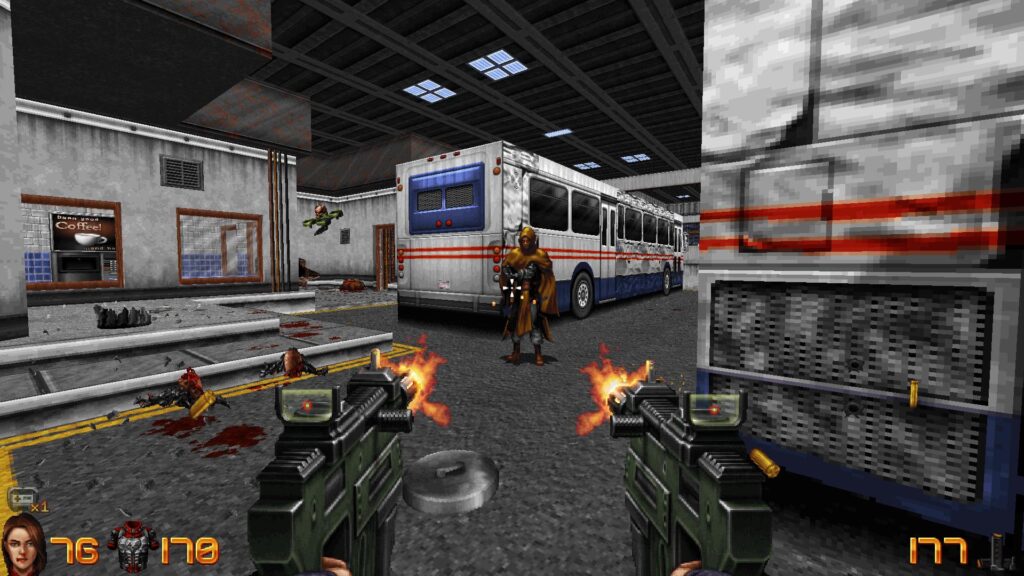
Getting Ion Fury to run on the Switch was likely a very technical and logistical nightmare, and the team’s efforts are mostly impressive. There is room for improvement; this was originally designed as a PC game, and as such control mapping was always envisioned with a keyboard and mouse. For consoles, this means a very slow weapon selection since controllers have no hot-keys.
The porting team needed to re-think how weapon selection is done since the default set-up makes weapon switch in the middle of a battle a liability. What Ion Fury on Switch needs is a weapon wheel where any armament can be quickly selected using a combination of a face button and the dial of the right analogue stick.
The playability is noticeably compromised, since Shelly takes too long to switch her guns. It is almost as if she gives herself a manicure between swaps. This could be something that might be addressed in a patch, and would improve the experience by a substantial margin if it does happen.

The music sounds like a cross between Euro-techno and something on the Amiga. Its very high energy and suits the grungy Bladerunner-inspired aesthetics. It is a step up from the metallic midi sounds from actual 90s era first person shooters.
Despite it not being the best version, Ion Fury‘s greatness still shines on the Nintendo Switch. Hopefully some of its minor roughness gets ironed out to make it perfect. Good first person shooters on Switch are uncommon, and this one ranks high.
Ion Fury on Switch is disappointingly a bit choppy, but it does run about as smooth as Duke Nukem 3D did back in the day before it was common for PC games to have high frame rates. It is still very playable, but with an unoptimized weapon selection it adds an extra layer of frustration.
Ion Fury was reviewed on Nintendo Switch using a review copy provided by 3D Realms. You can find additional information about Niche Gamer’s review/ethics policy here.